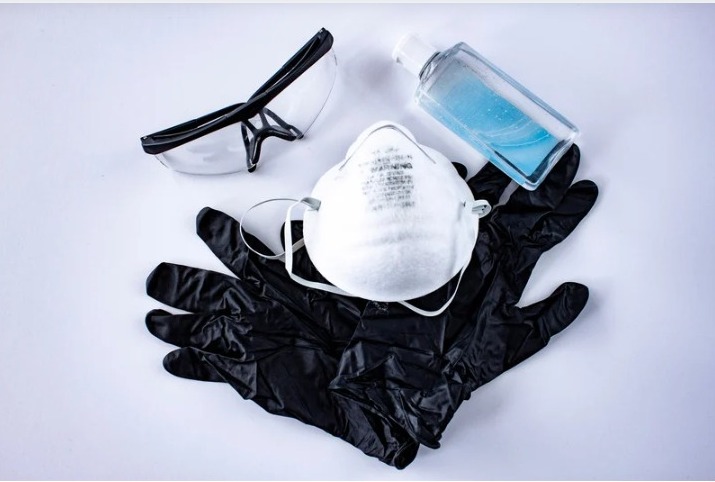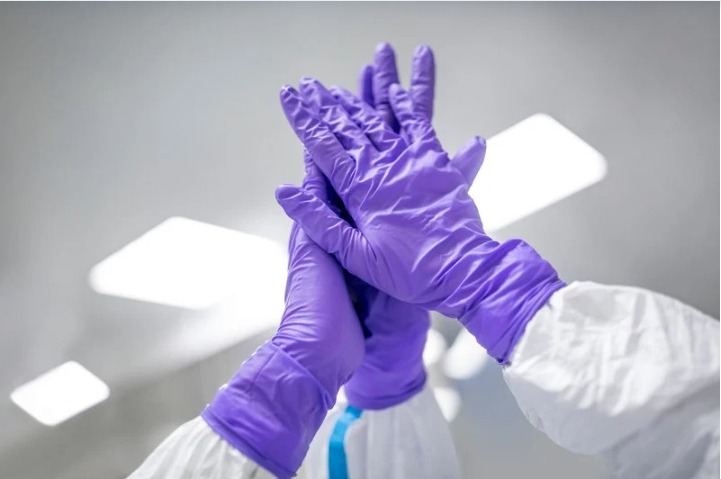Biosafety
Overview
Before beginning our experimental work, we filled out a preliminary Safety form that helped us take into consideration the different aspects of the project and its development that were related to the lab safety of the team members. In addition to reading extensively about what is on the competition's White list, including parts, permitted activities and use of animals. We also submitted a Check-in form and an Animal Use form.
Our project is intended to develop a biopesticide based on compounds found in the black pepper fruit (Piper nigrum), called piperamides. This biopesticide is intended to have less environmental impact and be safer for human health than the pesticides currently used in the region of Cosala, Sinaloa, Mexico.Saccharomyces cerevisiae strains will be used to express the designed biosynthetic pathway to produce Piperamides. The resulting biopesticide will be directed against larvae and eggs of the fall armyworm (Spodoptera frugiperda), which is a pest that affects corn (Zea mays) and currently causes large crop losses and economic losses for farmers. Therefore we carried out exhaustive research and experimental practices prioritizing the safety of our students and the biosecurity of Agropip at all times, being these essential aspects while working with Genetically Modified Organisms (GMO) and using synthetic biology techniques. In this section we will detail the measures taken by the Mexico team taking into account the facilities where the project was carried out, the laboratory techniques and the safety equipment we have.
Facility Design
Wet Lab activities were carried out in the laboratories of the biology faculty of the National Autonomous University of Mexico (UNAM), a Biosafety Level 1 laboratory (BSL-1). The laboratories used were the Laboratorio Nacional de Soluciones Biomiméticas para Diagnóstico y Terapia (National Laboratory of Biomimetic Solutions for Diagnosis and Therapy, LaNSBioDyT); the Laboratorio de Biología Molecular y Genómica, Microbiología de Levaduras (Laboratory of Molecular Biology and Genomics, Yeast Microbiology). And aditional location was used, which was the flow citometry facility in the Unidad de Investigación DR. Moisés Selman Lama (Research Unit DR. Moises Selman Lama) at the Instituto Nacional de Enfermedades Respiratorias (National Institute of Respiratory Diseases, INER).
The laboratories have all the required facilities for safe handling of biological organisms and substances used in the project. This facilities included proper lab spaces for easy and careful manipulation of all laboratory material, fume hoods, biosafety cabinets, proper waste management system, etc.
Prior to the laboratory work, we made sure that the facilities were safe and that we had the necessary equipment in case of any emergency, including fire extinguishers, blankets, chemical shower and first aid kit. There are emergency numbers in the University, such as the Comisión Local de Seguridad (Local Security Commission ,CLS) which contact is 55 5622 1590 EXT. 122 and CLS.CVIC@UNAM.MX. The laboratories used were in line with the university standard for safety and emergency response.
Safety Equipment
All the lab members that were involved in wet lab activities were provided with the proper personal protective equipment (PPE). It was also enforced the use of all required PPE when working in the lab. The provided equipment included lab coats, safety glasses, protective gloves, masks when needed, etc. the use of appropriate clothing was taken care of, including the use of closed shoes and long pants that cover the legs and do not let skin exposed to any risk

Containers appropriate for waste disposal depending on the nature of the waste were provided so that we could prevent any incidents and provide a proper waste disposal that was safe for people and the environment. This was performed in accordance to the protocols of the host labs.
Laboratory Practices and Techniques
Only the team members that had previous laboratory experience participated in the wet lab activities of the project. Some of the members belong to the host labs mentioned in the Facility Design section and had already taken the proper training in lab safety in those specific environment.
Some of the team members also have had international experience and have had training courses in biosafety with international standards. The places where these courses were taken by these members include the Stowers Institute for Medical Research in Kansas City, Missouri, USA; and the Western Science Centre at Western University, London, Ontario, Canada. These safety training included topics such as proper lab equipment use, safety standards in the lab, safety labelling, waste disposal, emergency measures in the lab, digital safety and data protection, etc.

Biosecurity
National and International Regulations
Our team is taking into account several regulations on pesticides, biotechnology and GMOs in Mexico as well as international regulations.
In Mexico the organizations responsible for dictating and observing the correct following of the laws and regulations regarding pesticides are the Secretaría de Medio Ambiente y Recursos Naturales (Secretariat of Environment and Natural Resources, SEMARNAT), Secretaría de Agricultura y Desarrollo Rural (Secretariat of Agriculture and Rural Development, SADER), the Secretaría de Salud (Secretariat of Health, SSA), the Comisión Intersecretarial de Bioseguridad de los Organismos Genéticamente Modificados (Intersecretarial Commission of Biosafety of Genetically Modified Organisms, CBIOGEM), the Comisión Federal para la Protección contra Riesgos Sanitarios (Federal Commission for the Protection against Health Risks, COFEPRIS), the Servicio Nacional de Sanidad e Inocuidad y Calidad Agroalimentaria (National Agricultural, Health, Safety and Quality Service, SENASICA) and the Procuraduría Federal de Protección al Ambiente (Federal Attorney for Environmental Protection, PROFEPA).
COFEPRIS has a Sanitary Registry of New Pesticides, where there is a registry process necessary for all new pesticides intended to be released to the market. The registry number COFEPRIS-06-007 corresponds to the Application for Registration of Botanical Pesticides for Use: Agricultural, Domestic, Forestry, Gardening, Livestock, in Public and Urban Health. The registry number COFEPRIS-06-030 corresponds to the Application for Registration of Formulated Chemicals for Use: Biocides.
Mexico has a Law on biosecurity of Genetically modify organism that every institution and laboratory has to adhere to. There is a total of 124 articles that aim to regulate the activities of use, confinement, release, commercialization, import and export of genetically modified organisms.
We also took into account Normas Oficiales Mexicanas (Mexican Official Standards): NOM-164-SEMARNAT/SAGARPA-2013,NOM-001-SAG/BIO-2014, NOM-059-SSA1-2013 and NOM-257-SSA1-2014. The Mexican Official Standard NOM-032-FITO-1995 regulates the requirements and specifications for moral and physical persons to test and evaluate pesticides.
Other important regulation for the biosafety and biosecurity in laboratories and laboratory related work in Mexico corresponds to the following laws: el Reglamento de la Ley de Bioseguridad de Organismos genéticamente Modificados (Regulations of the Law on Biosafety of Genetically Modified Organisms), Reglamento de la Comisión Intersecretarial de Bioseguridad de los Organismos Genéticamente Modificados (Regulations of the Intersecretarial Commission on Biosafety of Genetically Modified Organisms), Reglas de Operación de la Comisión Intersecretarial de Bioseguridad de los Organismos Genéticamente Modificados (Rules of Operation of the Intersecretarial Commission on Biosafety of Genetically Modified Organisms), Reglas de Operación del Fideicomiso “Fondo para el Fomento y Apoyo a la Investigación Científica y Tecnológica en Bioseguridad y Biotecnología” (Rules of Operation of the Trust “Fund for the Promotion and Support of Scientific and Technological Research in Biosafety and Biotechnology”).
SENASICA wrote a manual about Pesticides for agricultural use, which in turns
“1. Ensures that the pesticides for agricultural use that are intended to be registered comply with the characteristics of the use pattern (crop, pest, dose, number and application intervals), through the evaluation of their effectiveness and that allows them to obtain their Biological Effectiveness Opinion.
2. Issues a technical opinion on the biological effectiveness of pesticides for agricultural use and on the phytosanitary aspects of the maximum pesticide residue limits, in the cases established by the Regulation.
3. Observes that the manufacturing process, formulation, assembly, import, marketing and aerial application of pesticides for agricultural use comply with the phytosanitary and good use specifications (dose, pests, crops, expiration) in accordance with what is established in the opinion of the biological effectiveness technician.”
We considered also the Manual on the Development and Use of the Food and Agriculture Organization (FAO) and World Health Organization (WHO) Specifications for Pesticides.
For the future development of our project, we will consider international and national standards, within the international scope on the International Code of Conduct for Pesticide Management, prepared by the World Health Organization (WHO) and of the Food and Agriculture Organization of the United Nations (FAO). The International Code of Conduct for Pesticide Management is a voluntary framework that has been approved by FAO members, with the support of major pesticide industry associations and civil society organizations. It complements legally binding instruments such as the Rotterdam Convention on the Prior Informed Consent Procedure for Certain Hazardous Chemicals in International Trade, the Stockholm Convention on Persistent Organic Pollutants and the c. hazardous waste and its disposal, and voluntary mechanisms, such as the Strategic Approach to International Chemicals Management (SAICM).
References
- Wright, O., Stan, G.-B., & Ellis, T. (2013). Building-in biosafety for synthetic biology.
- New Law published in the Official Gazette of the F. el. (s/f). BIOSAFETY OF GENETICALLY MODIFIED ORGANISMS LAW.
- Samada, L. H., & Tambunan, U. S. F. (2020). Biopesticides as Promising Alternatives to Chemical Pesticides: A Review of Their Current and Future Status.